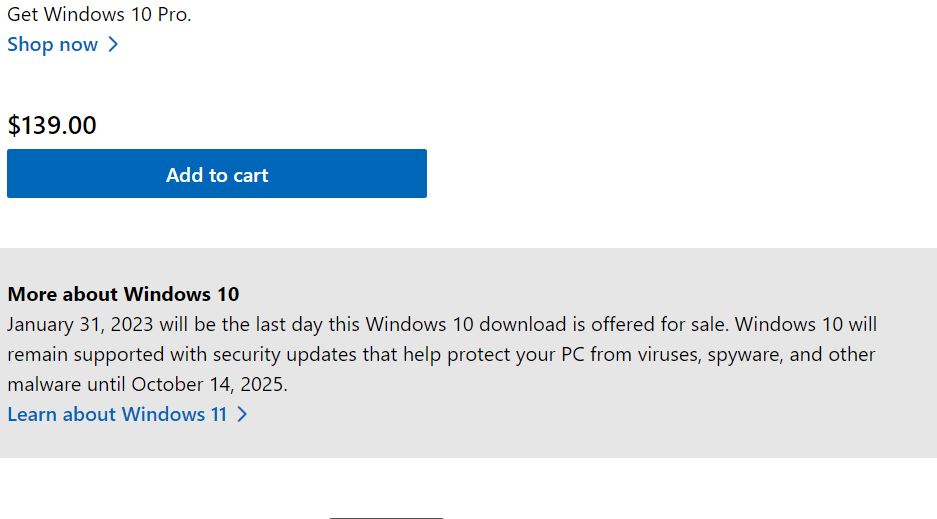First, an explanation of what may be a purely idiosyncratic acronym. In the preceding headline “EOS” stands for “End of Sales.” Indeed, the EOL (“End of Life”) date for Windows 10 remains unchanged at October 14, 2025. But EOS impacts those who want to build new systems, and for Windows 10 EOS hits January 31 of this year.
MS hasn’t commented on whether or not this means OEMs won’t be able to ship their PCs with Windows 10 installed after this date, either. But as you can see in the lead-in graphic, MS itself will no longer offer Windows 10 downloads for sale after this month ends. Note: despite the mention of Windows 10 Pro at top, the price shown — $139 — is for Windows 10 Home (Download). For my purposes here, the “More about Windows 10” text block is what matters most.
After Windows 10 EOS Hits January 31, Then?
First things first: I don’t see any similar warning on the official MS Download Windows 10 page. Apparently, users who already have valid Windows 10 license keys (unused or otherwise) can keep grabbing Windows 10 ISOs for installation and repair after January 31. That’s a relief!
So who’s really affected? Those who build their own PCs, or buy barebones models and elect to do their own OS installs (along with whatever else they do completing such builds). For such folks, buying a new, virgin Windows 10 license key (and download) from MS will no longer be an option. Undoubtedly, the aftermarket will remain awash in valid copies of same for some time after this cutoff date. That’s because plenty of such stuff is (or will be) in inventory when MS EOS hits.
What About the OEMs?
Again there’s no official word on this from MS. Ditto, AFAICT from the OEMs. But I can’t see MS stopping fleet or bulk sales to big buyers after January 31, even though they’re apparently halting small-scale retail sales of Windows 10 at that point. Too much potential business and revenue could be impacted, so no…
This raises an interesting question: Why do this now? My best guess is that MS is signalling end users — pretty strongly, in fact — that it’s time to target Windows 11 (and only Windows 11) on new builds. Given that Panos Panay talked about a Windows 12 successor at CES this year in Las Vegas, January 3-8, this timing is surely no coincidence.
Two predictions:
1. MS resellers will stock up on Windows 10 media and key combinations, to cover upcoming demand as they project it.
2. OEMs will continue to build Windows 10 PCs on order from customers, even after January 31.
As always, it should be interesting to see how this turns out. Stay tuned, and I’ll keep you informed!
